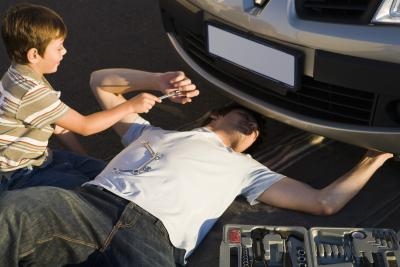
Auto repair diagnosis can be tricky at times. Still, using a systematic approach, you can make your job much easier in solving many of your car problems. In many cases, you will be able to trace car troubles to components in need of proper maintenance or replacement, which may affect engine performance. Once you zero in on the characteristics of your specific problem and its symptoms, you are on your way to diagnosing and correcting the fault.
Make a list of the symptoms you have noticed since the problem started in a notepad using a pencil. For example, engine backfiring, stalling, overheating, clicking noises coming from the front wheels, uneven braking when you depress the brake pedal, etc.
Describe when each symptom occurs next to each problem you listed in step one. For example, perhaps the engine backfires at any speed, but the vehicle stalls only when it is cold. Does it overheat after ten minutes of driving? Does it only make a clicking noise when turning left but not when turning right?
List all the possible systems that may be involved in the problem you described in step 1, paying special attention to when the problem occurs as you noted in step 2. For example, if the engine backfires regardless of speed or weather the engine is cold or warmed, your car might need timing adjustment. If the engine stalls only at idle, the idle speed might be incorrect or the idle speed control motor might have failed, or you might have a fault in the fuel or emission system.
Proceed with your diagnostic at the most logical point in the system you believe is most likely to be causing the problem. Make a visual inspection of wires, connectors and components in the system you are suspecting. Many times, a loose wire, dirty connection or damaged component may be the cause of the problem and is just a matter of adjusting a wire or connector or replacing a damaged part. If the engine overheats, check the coolant level and look for signs of leaks around the radiator, hoses and water pump.
Begin testing the most likely components you think are involved in the problem, if your visual inspection of the system did not turned out any unusual signs of trouble. For example if the engine backfires, remove the distributor cap and rotor and check them for cracks, carbon traces or other damage. Test the ignition coil using your multimeter and then go to the throttle position sensor. If the engine overheats, check the thermostat and water pump.